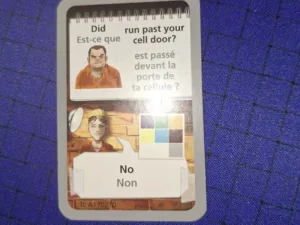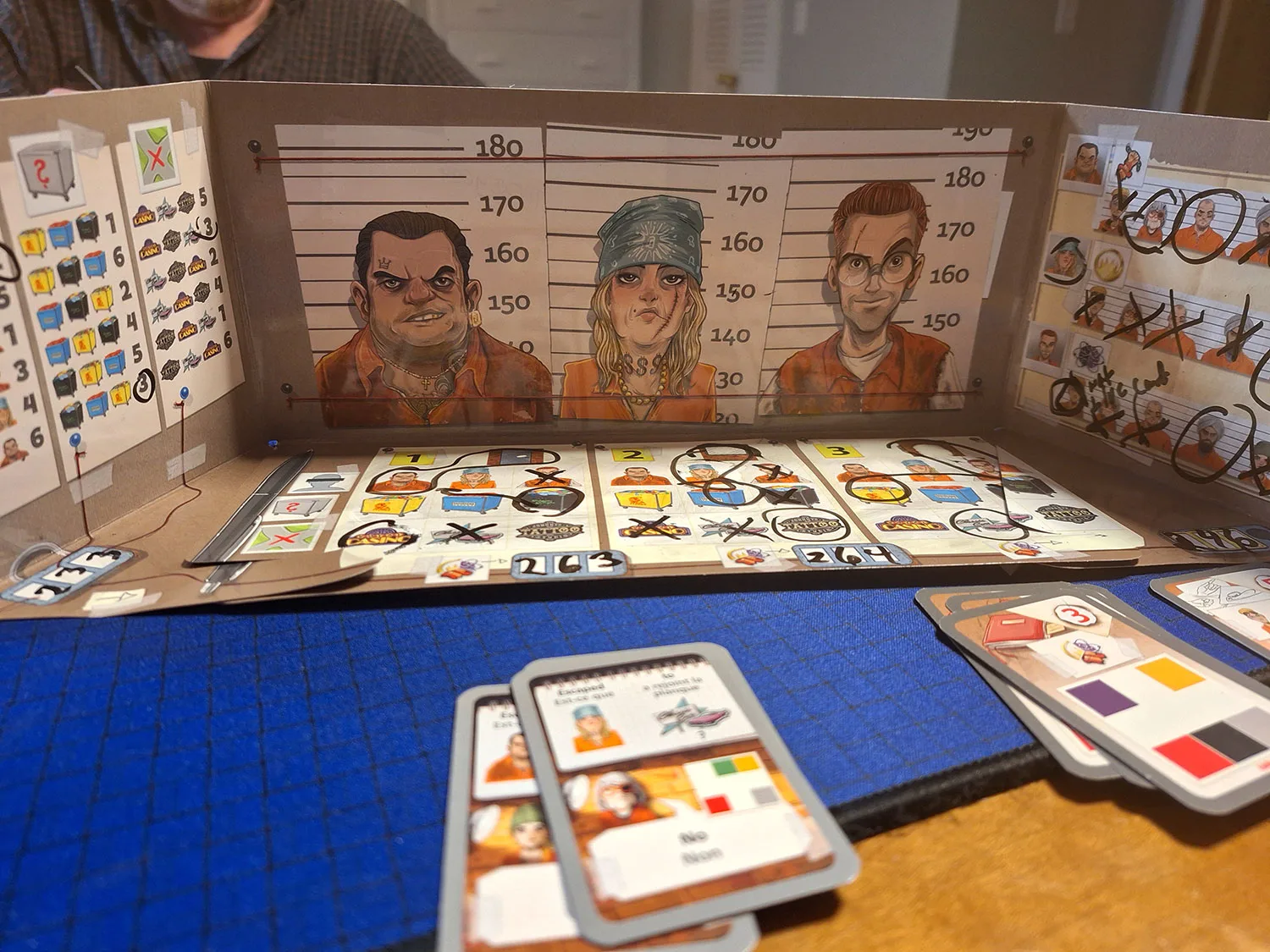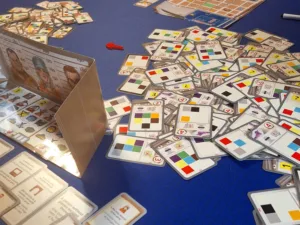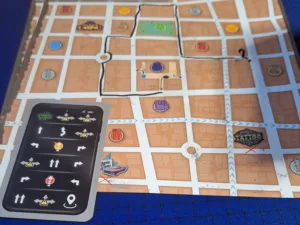 You are a detective, trying to solve three cases at once. To complete the game, you’ll need to discover which gang leader escaped the prison by which method and where they went to hide after their getaway.
You are a detective, trying to solve three cases at once. To complete the game, you’ll need to discover which gang leader escaped the prison by which method and where they went to hide after their getaway.
The Key: Escape from Strongwall Prison is a traditional logic puzzle, with information doled out on cards, maps, and visual clues. You will strive to obtain the three solutions more efficiently than your competitors, rather than more quickly.
This is an “expert” level addition to the series of logic games called The Key. The game is part of HABA’s Family Series, designed by Thomas Sing, with art by Tim Grubing and Benjamin Petzold. It plays from 1-4 players, with an age rating of 12 and up. It takes about 45 minutes to solve the puzzle.
Gameplay Overview:
Each player has a briefcase to screen proposed answers, a dry-erase marker, an investigation file, and a city map. Players will draw from the two decks of investigation cards, one set for the three primary cases, and one set for the secondary puzzle, which is grouping gang members with the correct gang leader.
Since the game has nine variations, the backs of the cards are color-coded with squares. If you choose to play the yellow key, every card you use in the game must have a yellow square on its back. Other coding on the backs indicates what type of clue the card contains: witness statements, lab cards, interrogations, or gang symbols.

The two decks are simply scattered facedown into two piles in the middle of the table. Each player may simultaneously take any card from either deck. Cards you draw are hidden from other players, unless they have a symbol which, when revealed, require you to draw an interrogation card that will become an “open interrogation.” Open interrogation cards must be shared by all.
When you have solved all questions about the three escapes and assigned the remaining prisoners to the correct gang, you’ll generate a numeric key. Find the answer on the solution board and put the color key through it. Check the back of the board to see if you are correct.
The cards have point values used to calculate how efficiently you solved the cases. More information is offered on high point value cards. When you’ve solved the puzzle, total the point value on every card you used to get your efficiency score. The most efficient player (lowest score) with the correct answer wins.

Game Experience:
If you are new to the series, take some time to examine the symbols on the different investigation cards before you try your first game. The last thing you want to do is pull cards related to a piece of the puzzle you’ve already solved.
You can’t predict exactly what bit of information is on a card, so luck does play a part in how efficiently you solve the game. You’ll likely draw a few cards that duplicate information you already have; you’ll also draw some cards you must set aside until you collect additional details.

The rulebook suffers from a lack of organization and clarity, although there’s no lack of information. Thematic flavor text is mingled with critical rules. In addition, the game would be improved by a player reference card to remind players of clue categories and special symbols.
The usual grid solving box of a logic puzzle is replaced by visual representations, and players are free to mark up their briefcase screen however they like. While the screen and the city map are laminated, the file folder is not, and seems like it should be. The cell block diagram appears in the file folder, but if you want to mark it up, you’ll need to use the small version duplicated in a corner of the city map.

Both the maps and the ‘spot the difference’ puzzles were unpleasant to solve. The navigation cards had a large number of instructions and inadequate explanations. For example, without apparent reason there were occasionally two movement types in one step. We reached for the rulebook for the fine points of map navigation over and over.
The differences on the ‘spot the difference’ cards were incredibly small. I think the effort to use a variety of clue types and to include visual and spatial information is commendable; some of it could be improved.
That being said, it’s possible to solve the puzzle without using either of these types of information.
Final Thoughts:
This entry of The Key games is quite tricky, with no room for mistakes. The series may be kid friendly, but Escape from Strongwall Prison should be reserved for teens familiar with logic puzzles or those who have mastered the game system with one of the other games in the series. The rulebook and the non-textual clue types are below par.
Final Score: 3 Stars – For those who like logic puzzles, a clever game, with some definite room for improvement in the visual/spatial clues and in the rulebook.
 Hits:
Hits:
• The gang interrogation cards are a fun twist on a knights and knaves puzzle.
• There’s great tension in the urge to solve first when you should be trying to solve smart.
Misses:
• The rulebook wasn’t well-organized, and the game needs player reference cards.
• The navigation puzzle is extremely difficult, with ambiguity in some of the movement rules. Movement rules should be listed on the map, not buried in the rulebook.





















